What is login page UI design, why is it important, and how can you ensure its effectiveness? We’ve got everything you need to know about this important page in the user journey in this complete guide.
It’s hard to overstate the importance of the login page. Typically the first page of a website, app, or other digital service, the login interface can often be a user’s first touchpoint with a digital service, shaping their initial impressions of a brand and influencing their entire user experience. You’ll find login pages wherever you go, from online banking apps to e-commerce sites, securing user data and ensuring seamless access to a company’s services and personalized accounts.
If you’re new to designing the UI of login pages, then you’ve come to the right place. In this article, we’ll be delving into why this page is so important and sharing tips, best practices, and real-world examples that demonstrate how you can design intuitive and secure login experiences for your users. We’ll also be looking at trends for the coming year and innovations in the field that are likely to further transform user interactions with login interfaces going forward.
Here’s what we’ll be covering:
- What is login page UI design?
- Why is login page UI design so important?
- Different types of login pages (with examples)
- Best practices for effective login page design
- Top tips for effective login page UI design
- Trends for 2025
- Conclusion
Ready to learn more about this key user entry point to digital services? Then let’s dive in!

What is Login Page UI design?
Logging into and out of websites is something we all do throughout the day. Whether we’re trying to access our email, catch up with social media, or check our online banking, logging into an account with a unique email address (or username) and password helps a platform protect our privacy, provide us with personalized information, and ensure our data is secure.
The UI design of the login page comprises the visual and interactive elements of the login screen’s interface. The goal of the UI designer here is to create a user-friendly, crystal clear, and visually appealing page where users can enter the login information required. Once this task is successfully completed, the page allows them access to the service they are logging into and, often, their own personal portal or profile within that service. For this reason, you’re likely to see login pages across a broad range of services, including websites, apps, games, and systems, with well-designed interfaces prioritizing intuitiveness, efficiency, clear navigation, user feedback, and security.
Irrespective of the service being accessed, there are a few commonalities across login pages and their design components. You’re likely to see input fields for usernames/email addresses and passwords, CTA (call-to-action) buttons such as “log in” or “sign up”, and other options like social media login integrations, or “forgot password” links.
In 2025, simplicity, clean layouts, and accessibility will be key trends in login page UI design. You’re likely to notice an increase in minimalist designs, accessibility features, mobile optimization, and advanced security measures as brands seek to enhance user trust and ensure repeat use of their product or service.
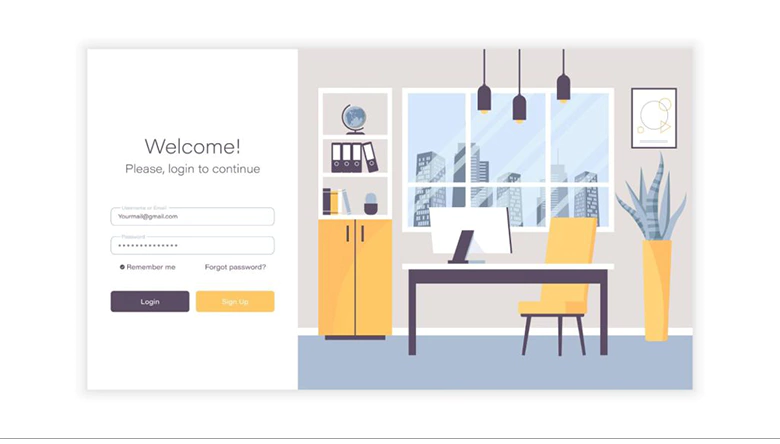
Why is Login Page UI design so important?
Getting the design of the login page UI right is crucial. Why? Because this page is very often the first point of interaction a user has with the service, website, or app they want to use. It gives users a degree of insight into what their interactions with the service will be beyond that page–whether they’ll be straightforward and enjoyable, or tricky to understand and frustrating.
When time is spent designing a clutter-free, streamlined, and intuitive login page that leads users swiftly to where they want to go, trust and engagement between the platform and the user soars. This typically leads to repeat visits and word-of-mouth recommendations, boosting traffic and increasing conversion rates for the brand. It also leads to an overall positive experience for the users.
Conversely, when the login page UI design is neglected, a poor user experience is likely to ensue. A cluttered or messy design, a non-logical content hierarchy, and non-intuitive navigation will leave users confused and, ultimately, frustrated. When this happens, it’s unlikely they will persevere to experience the service.
For this reason, it’s crucial that as much time and effort is spent on the login page as any other on the website or app. The first impression you leave with users at this stage will set the tone for how they feel about the service in general–and whether or not they decide to come back.
Different types of Login Pages plus great examples of each
Curious to see how big brands use login pages to create seamless user experiences that keep users engaged? Here, we run you through the most common types of login pages and give you big-name examples of each.
1. Single-step login
Single-step login describes a process that requires a single action such as clicking a button or using a biometric feature to access a website’s services.
An example of a single-step login page is the publishing platform, from Medium. Users simply click on a social media handle (or other handle) to log in.

2. Two-step login
Two-step login, also known as two-factor authentication (2FA), requires users to give two forms of verification in order to access an account or service. While the first step usually involves entering a username and password, the second step involves another layer of security such as a one-time code sent via SMS or email link that needs to be entered in a provided input field.
An example of a two-step login is Google’s 2-Step Verification.
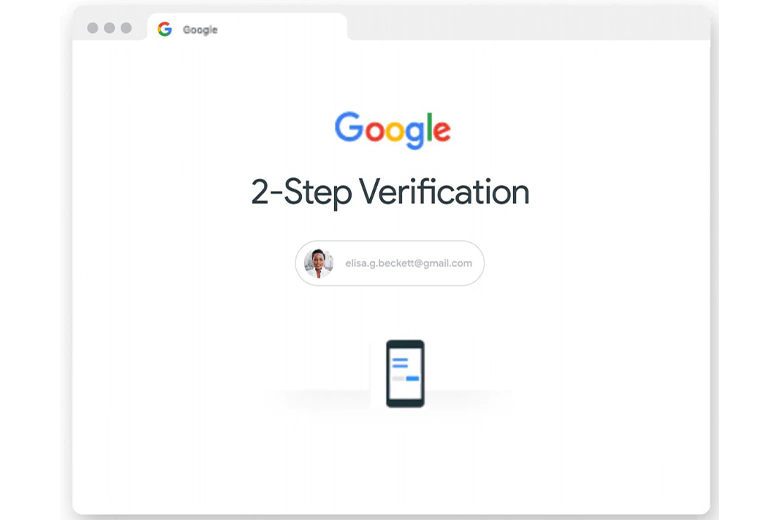
3. Social media login
Social media login is when users log into a website or app using their existing social media account credentials, the most common ones being Facebook, Google, X, or LinkedIn. Users simply click on a social media icon and authenticate using their login details.
Skillshare offers users the opportunity to log in using their Facebook, Google, or Apple accounts, as well as with an email address if preferred.
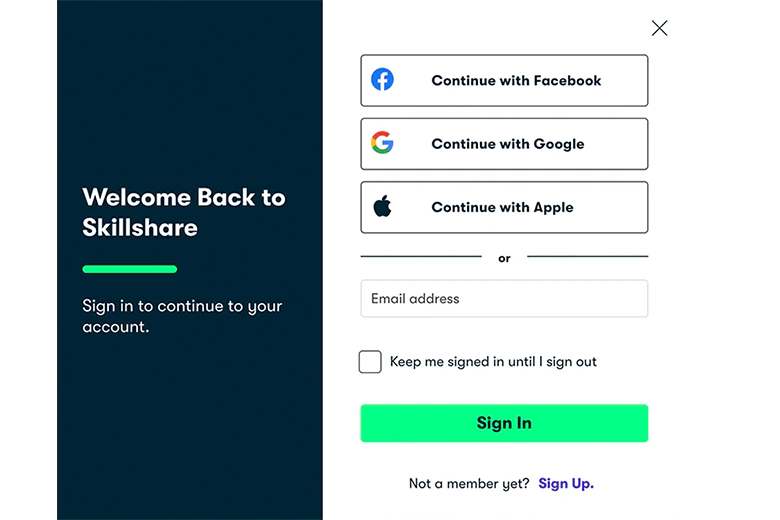
3. Passwordless login
Passwordless login is an authentication method that enables users to access an account or service without the need to enter a password. Instead, users are given alternative methods to log in such as email links, SMS codes, biometric verification, or magic links (one-time-use URLs).
An example of a passwordless login would be Wildbit. Users get sent a magic link upon entering their email address. When they click on this link they are securely logged in.
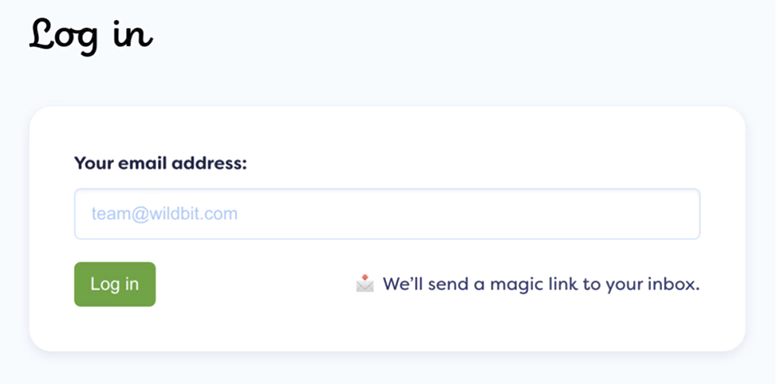
4. Multi-factor authentication (MFA) login
Multi-factor authentication (MFA) is a highly secure login process that requires users to provide two or more forms of verification to gain access to their personal portal. The authentication process usually combines something the user knows (e.g., a password), something the user has (e.g., a smartphone), and/or something the user is (e.g., biometric data like fingerprints). By requesting these three distinct and personal elements, users can feel reassured that their data is properly protected and less vulnerable to a security breach.
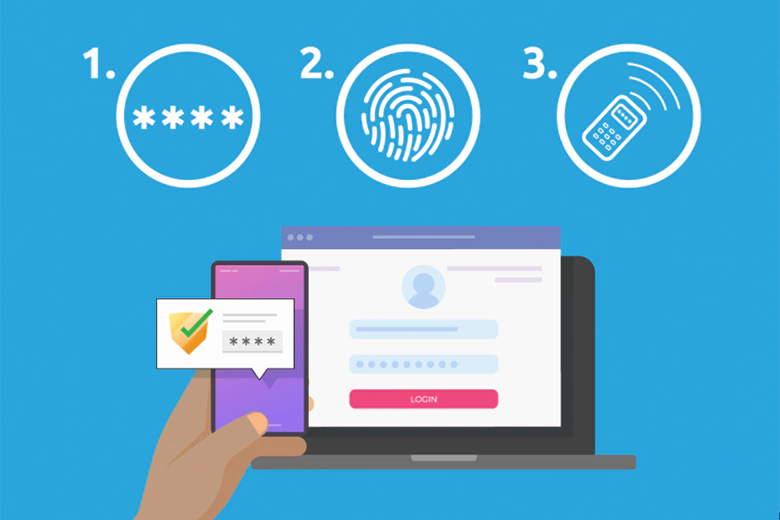
5. Guest (or temporary) login
Common on e-commerce sites, a guest or temporary login allows users to access a website and its services without creating a permanent account or entering a username or password. It’s ideal for those who want to try out a service before committing to a full registration process. A guest login offers quick access but usually with limited functionality. These additional functions can often only be accessed when the user creates an account.
Urban Outfitters is a great example of a website that offers its customers the option to checkout as a guest.
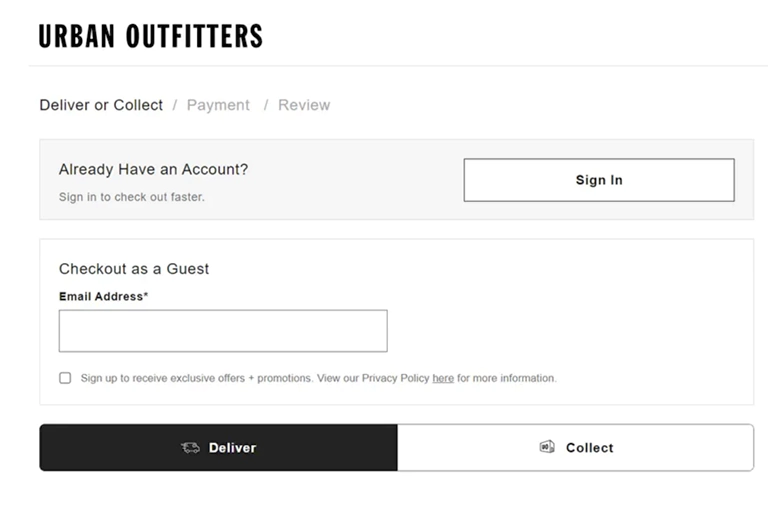
6. Login with CAPTCHA
CAPTCHA stands for Completely Automated Public Turing test to tell Computers and Humans Apart and appears during the login process to verify that a user is a human and not a bot. Users typically have to complete a challenge such as solving a simple puzzle or selecting images of specific objects in order to demonstrate they are human.
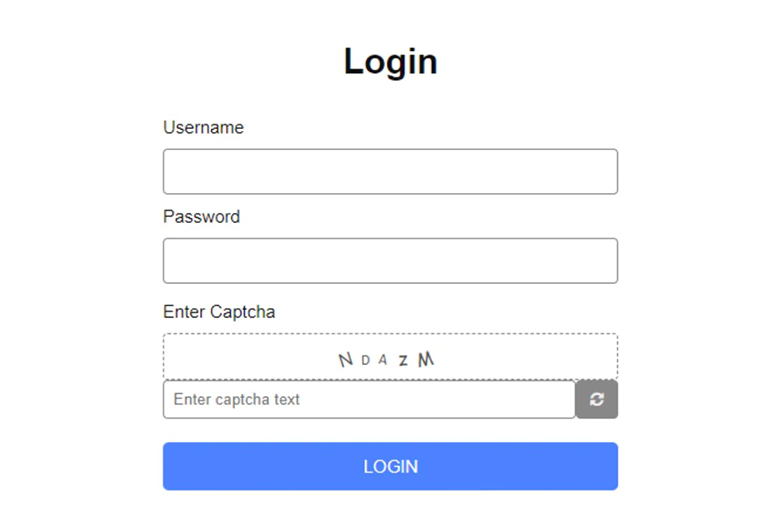
Best practices for effective Login Page design
These best practices will ensure your login page UI design is intuitive, streamlined, accessible, and secure.
1. Offer social login options
Social login options are when users can sign in to a website, app, or service using their social media accounts like Facebook, Google, or Yahoo. The benefit of enabling this option is that users don’t have to remember a password and can access your service with a single click, making the overall experience frictionless and easy.
2. Optimize for speed
To reduce user frustration, improve the user experience, and reduce drop-off rates, it’s important you optimize your login page for speed. You can do this by minimizing the image sizes and optimizing scripts.
3. Prioritize accessibility
Every user has different needs, challenges, and preferences. For this reason, it’s important to ensure your login page is fully accessible to everyone. Be mindful to use readable fonts, proper color contrast, and keyboard navigability so that your page is usable for everyone including those with disabilities or diverse learning needs.

4. Test for browser compatibility
Users have different preferences regarding the browsers and operating systems they use to access websites and services. You’ll need to test your login page with a wide range of these to ensure it works equally well across all of them. By unearthing these problems early on in the testing phase of the design process, you’ll help to avoid issues that could later frustrate users coming to your site from different browsers.
5. Indicate the Caps Lock option
In order to prevent users from making errors, particularly with inputting usernames and passwords, it’s important to warn users if the Caps Lock key is turned on. Although this may seem minor, it can save users a great deal of time and frustration when typing case-sensitive information, as is often the case on the login page.
6. Give immediate input validation
It’s important to provide users with real-time feedback when they enter their information into input fields such as Username and Password, letting them know if there are any issues such as missing information or incorrect formatting. Instant validation doesn’t just help users correct mistakes before they submit the form, it also builds trust between the user and platform.
7. Display clear and specific password requirements
While many of us know what is expected of us when logging into a website or app, it’s still absolutely essential to clearly show the password requirements close to the input field. Some users will be new to the process and login requirements can vary from platform to platform. When you state clearly what is expected of users it reduces error rates and produces stronger passwords, in turn increasing security.

8. Enable users to switch seamlessly between login and sign-up
Using a clearly posted link or button makes it easy for users to switch between login and sign-up forms. This prevents confusion and enables new visitors to easily navigate through the site.
9. Ask for an email and not a username
While some websites still ask users to create usernames when they sign up for a service, this practice is becoming less and less common. This is because an email address is a lot easier for users to remember, whereas different usernames on different sites can quickly lead to confusion and information being forgotten. A user’s email address is universally accessible and most people have just one or two to choose from.
10. Split up the registration process into separate parts
The registration process can be overwhelming for users, particularly those who are not tech-savvy. To ease the cognitive load, it can be useful to break down the registration process into manageable steps. You might even split it up into multiple pages, with each page asking for a different piece of information. With this approach, you’re likely to see completion rates soar.
11. Offer the ‘Remember Me’ option
Include a “Remember Me” checkbox close to the input fields of your login page to enable users to stay logged in on trusted devices if they choose. This convenient option tends to boost user retention as users know that they will only have to remember their details once.
Top tips for effective Login Page UI design
Here are some of our top tips to ensure the effectiveness of your login pages.
1. Keep it simple
To enhance the user experience and keep friction to a minimum, it’s important to design a clean, uncluttered login page. Prioritize key elements and provide clear signposting to avoid your users becoming overwhelmed or frustrated.
2. Ensure it’s fully responsive
Your users may wish to access your website from a range of different devices, such as desktops, tablets, and mobiles. For this reason, you’ll need to ensure that your login page is fully responsive, adapting seamlessly to different screen sizes. This improves accessibility and ensures that users stay engaged.
3. Highlight security features
To build trust and instill confidence in your service, security features such as multi-factor authentication options or SSL encryption should be clearly displayed and highlighted. Users are more likely to feel secure using your service when they can clearly see the security features you have enabled.
4. Use clear call-to-action (CTA) buttons
Whether you use bold, descriptive text, an eye-catching button design, or contrasting colors, make sure your CTA buttons stand out. This helps to mitigate confusion when users are looking to move on to the next stage in the login process.

5. Build in branding elements
It’s important to reflect your brand’s identity on the login page so that users have a cohesive experience right from the start. To do this, incorporate your brand’s logo, colors, and fonts into the page design without distracting from the login input fields.
6. Include an easy recovery option
It’s common for users to forget their passwords or usernames. Therefore, it’s essential you provide a straightforward and intuitive reset process that enables them to quickly recover these details. When a simple recovery option is offered, users are much less likely to abandon the page.
Trends in Login Page UI design for 2025
What can we expect from login page UI design over the next 12 months? We’ve got the trends you’re likely to see more of in 2025.
1. Biometric login options
Biometric authentication is when a user can use their unique physical characteristics to log in to a device or service. Common examples of this include fingerprint and facial recognition. Thanks to technological advances in smartphones and laptops that enable touchless access, users are likely to see more biometric login options as we look to 2025 and beyond.
2. Passwordless authentication
As user security concerns steadily rise, passwordless login methods will continue to dominate in the coming years. Magic links, one-time codes, and OAuth integrations will become more prevalent as they enable users to authenticate their details without having to enter a password. As well as reducing a user’s vulnerability to security breaches and cyber threats, they also enhance user convenience.
3. Dark mode-friendly designs
Dark mode–when a website or app uses light-colored text and design elements on a dark background–is another trend we are going to see more of on login pages going forward. This low-light-friendly theme reduces eye strain, improves accessibility, and conserves a device’s battery life. It’s likely that in 2025 most login pages will offer easy toggles for users to alternate between light and dark modes, enabling them to customize their own user experience to better meet their preferences.
4. Animated micro-interactions
Subtle animations like button hover effects and loading spinners are going to be a major trend over the next few years, giving users immediate visual feedback for every interaction. Adding a polished finish to the design, these micro-animations support users through the login process intuitively, enhancing engagement and improving the overall user experience.

Conclusion
As user habits change and technology becomes more advanced over the next twelve months, login page UI design will evolve with a focus on enhancing the user experience and bolstering security. We’re likely to see more biometric authentication, passwordless logins, and dark mode designs, as well as personalization opportunities and increased accessibility.
If you’d like to learn more about the UI design principles and process, as well as its best practices and principles, head back to the AND Academy blog now for more articles like this one. You can also check out this project by AND Learner, Abhishek Singh to understand the UI design process better.
Next Steps
In case you think you need further assistance, here are some of our resources you can consider:
- Watch this session by Shiva Viswanathan, Design Head of Ogilvy Pennywise, and Naman Singh, Product Experience Designer at RED.
- Talk to a course advisor to discuss how you can transform your career with one of our courses.
- Pursue our UI UX Design courses - all courses are taught through live, interactive classes by industry experts, and some even offer a Job Guarantee.
- Take advantage of our scholarship and funding options to overcome any financial hurdle on the path of your career transformation.
Note: All information and/or data from external sources is believed to be accurate as of the date of publication.










